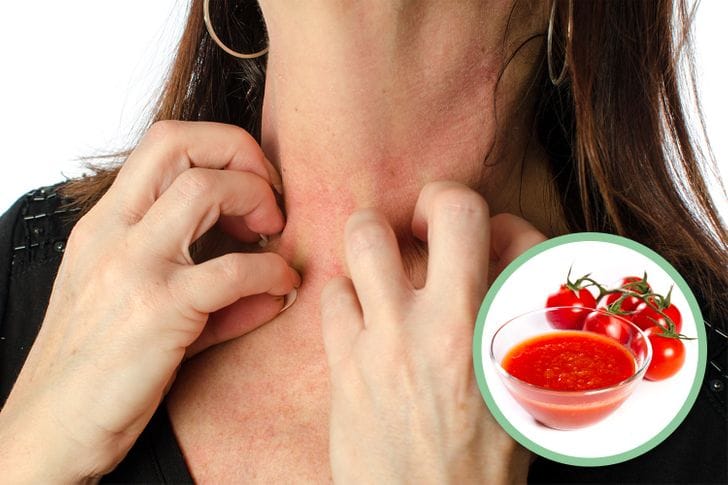Tomatoes are one of the world’s most popular fruits — loved for their flavor, versatility, and rich nutrient profile. However, for some people, enjoying tomatoes isn’t so simple. Tomato allergy, although rare, can trigger uncomfortable or even dangerous symptoms. Understanding what tomato allergy is, its causes, and how to manage it can help you stay safe and healthy.
Although a true tomato allergy is relatively rare, it’s important to recognize the symptoms, understand the causes, and know how to manage it safely.
Is Tomato Allergy Common?
The good news is that true tomato allergies are rare.
Most people can enjoy tomatoes without any problems. However, because tomatoes are acidic and belong to the nightshade family (which includes potatoes, eggplants, and peppers), they can cause reactions in some sensitive individuals.
In many cases, reactions to tomatoes are not true allergies but rather intolerances or sensitivities — especially when the symptoms are limited to digestive upset.
👉 Key difference:
-
Intolerance affects the digestive system (like stomach upset or diarrhea).
-
Allergy involves the immune system and can cause rashes, hives, swelling, or even anaphylaxis in rare cases.
Tomato Allergy and Babies
Babies have very sensitive digestive systems, which sometimes cannot handle acidic foods like tomatoes early on.
While there is no official guideline about when to introduce tomatoes to infants, pediatricians often suggest caution.
If your baby shows signs like:
-
Diaper rash
-
Hives
-
Vomiting after eating tomatoes
It’s best to pause introduction and try again after 12–24 months.
Why Some People React Only to Raw Tomatoes
Interestingly, some individuals with tomato sensitivities find they can tolerate cooked tomatoes — such as those found in pizza sauce, ketchup, or spaghetti sauce.
Why?
-
Cooking breaks down or alters the proteins responsible for triggering the allergic response.
-
As a result, the immune system may no longer recognize the cooked proteins as a threat.
🔔 Important Note:
This is not always reliable. Some people may still react even after tomatoes are cooked.
Oral Allergy Syndrome and Tomatoes
Oral Allergy Syndrome (OAS) is a condition where the body mistakes certain food proteins for pollen allergens.
Tomatoes are commonly involved in OAS due to their similarity to grass pollen proteins.
Symptoms of Tomato-Related OAS:
-
Itching or tingling in the mouth and throat
-
Swelling of lips, tongue, or inside the mouth
-
Blisters inside the mouth or on the lips
Typically, OAS reactions occur only with raw tomatoes, and cooking them often prevents symptoms.
👉 Other foods commonly associated with OAS include:
-
Melons
-
Celery
-
Oranges
-
Peaches
⚠️ Warning:
If symptoms progress beyond the mouth (e.g., difficulty breathing, widespread hives), seek emergency medical attention.
There is a risk of anaphylaxis, although rare.
Seasonal Allergies Symptoms: Simple Things To Do To Avoid Them
Tomato Allergy Symptoms
Symptoms of a true tomato allergy usually appear within minutes of contact or ingestion.
Mild to Moderate Symptoms:
-
Itching or burning sensation around the mouth and lips
-
Swelling of lips, tongue, or throat
-
Blisters on areas that touched the tomato
-
Rash, hives, or eczema flare-ups
-
Itchy skin on face, arms, or hands
Severe Symptoms (Rare):
-
Throat tightening
-
Wheezing or difficulty breathing
-
Sudden drop in blood pressure
-
Anaphylactic shock
What to do:
-
For mild symptoms: Rinse the mouth, drink water, and monitor closely.
-
For severe reactions: Seek emergency medical help immediately!
Food allergy symptoms you should not ignore
Treatment and Management of Tomato Allergy
Unfortunately, there is no cure for tomato allergy.
The primary treatment is strict avoidance of tomatoes and tomato-containing products.
Practical Tips:
-
Carefully read labels for tomato ingredients (like tomato paste, puree, juice, etc.)
-
Ask detailed questions at restaurants about sauces, dressings, and toppings.
-
Experiment cautiously: Some individuals can tolerate small amounts of cooked tomatoes but not raw ones.
-
Consider carrying an antihistamine or epinephrine auto-injector (EpiPen) if your doctor recommends it.
Tip:
Keep a food diary if you are unsure about what’s triggering your reactions — it can help you and your doctor identify patterns faster.
Can Tomato Allergy Disappear Over Time?
Some individuals — especially children — may outgrow their sensitivity or allergy to tomatoes over time.
However, in other cases, the allergy can persist into adulthood or even return after seeming to disappear.
Always proceed with caution and consult your allergist before reintroducing tomatoes into your diet.
FAQs About Tomato Allergy
How do I know if it’s a tomato allergy or intolerance?
If you experience digestive symptoms like bloating or diarrhea after eating tomatoes, it may be intolerance.
If you develop hives, swelling, or breathing problems, it’s more likely a true allergy.
Can tomato allergy cause anaphylaxis?
While rare, severe allergic reactions like anaphylaxis are possible with tomato allergy, especially if you have a history of other food allergies.
Are cooked tomatoes safer for people with tomato allergy?
In cases of oral allergy syndrome, cooked tomatoes may not trigger symptoms. However, those with true allergies may still react, even to cooked forms.
What foods should I avoid if I have a tomato allergy?
Avoid raw tomatoes, cooked tomatoes, sauces, ketchup, soups, stews, pizzas, and any processed foods that list tomato derivatives.
Useful Resources:

